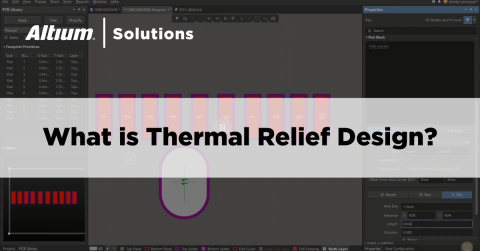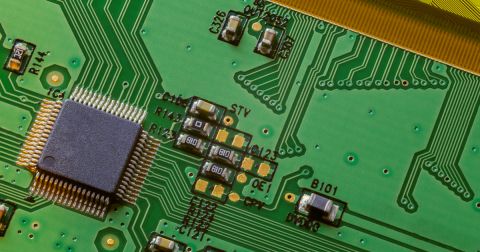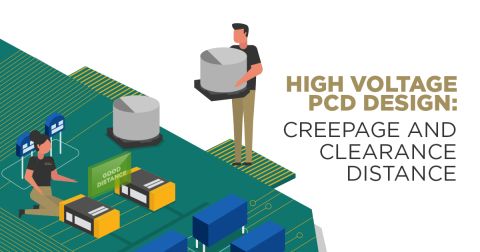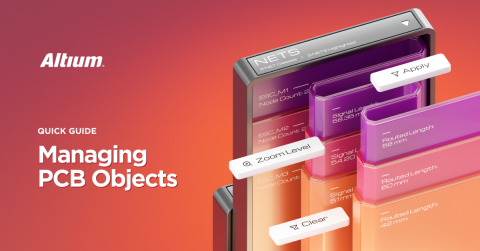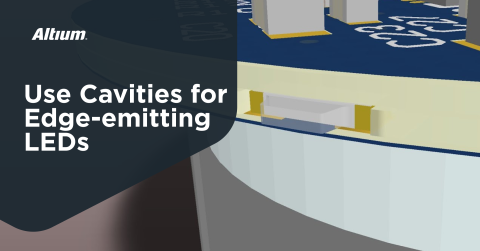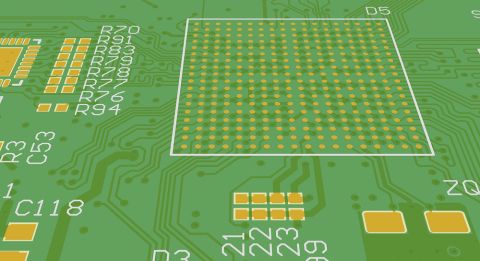Designing for Military and Aerospace Embedded Systems Applications

Military and aerospace systems include a number of embedded systems that provide critical functionality. Your next military or aerospace system will require a number of complicated embedded systems to keep it functioning at top performance. Each of these embedded systems must provide specific functionality in rugged environments, and creating these systems takes powerful design software. Only Altium Designer gives you all the tools you need to design boards for embedded systems and prepare them for production.
ALTIUM DESIGNER®
A unified PCB design package for embedded electronics systems in military and aerospace applications.
When some designers hear the term “embedded systems”, it conjures a number of different definitions. No matter your definition, they are a distinct type of PCB that has specific functionality and appears as part of a larger system. An embedded system is intended to perform specific functions within an overall system with perpetual uptime and little to no maintenance. Engineers need to identify the required capabilities design accordingly.
Designing PCBs for embedded systems takes design software that is adaptable to any design, whether it’s a typical PCB, computer peripheral, or a single board computer for an unmanned vehicle or aircraft. The right design software will help you design to military and industry standards by allowing you to incorporate critical layout and electrical specifications as design rules. Only Altium Designer integrates all of your design features on top of a single rules-driven design engine, giving you the adaptability you need to design any embedded system.
Embedded Systems vs. Vanilla PCBs
In avionics, aerospace, and military applications, embedded systems will almost always include onboard processing with custom firmware, volatile and non-volatile memory, communications capabilities, and signal processing capabilities. Not all PCBs will include this functionality as some of these functions may appear in separate boards or on a computer. These boards are designed to withstand harsh environments on the battlefield and during flight.
Some use cases for embedded systems in military and aerospace include unmanned vehicles, surveillance systems, weapons guidance systems, and a host of other rugged systems. Compared to other devices or off-the-shelf single board computers, embedded systems tend to incorporate the best technology on the market and provide a range of functionality.
Designing Embedded Systems for Aerospace and Military Applications
Working with embedded systems in the defense and aerospace industries takes design software that helps you overcome many of the same challenges encountered by electronics designers for any other system.
The military and electronics industry at large impose standards for embedded systems in military and aerospace applications. Designing to critical MIL and IPC standards, designing for assembly and manufacturing, and ensuring embedded aerospace and military systems can withstand harsh environments are important tasks for any embedded systems designer.
These systems typically contain central processing capabilities that process data from other devices. They contain firmware that runs critical onboard components like cameras, sensors, or communications equipment. Board level processing is normally implemented with an MCU, FPGA, or multi-core processor, and systems designers will need to create firmware to run these systems.
- Any component that appears in an embedded system will need to be IPC compliant in order for the entire system to meet IPC and MIL standards. Learn more about using IPC compliant component models in your design.
- Embedded systems for portable/mobile military require power management capabilities that appear directly on-board. Learn more about power management in embedded systems.
- Alongside onboard processing and power management capabilities comes memory requirements. Your device will need to have some onboard memory and will need to be managed properly to ensure functionality.
Learn more about memory requirements and management in embedded systems.

Creating an IPC compliant component model in Altium Designer
The Future of Embedded Systems in Military and Aerospace Applications
With the military embedded systems market predicted to be worth $134.88 billion by 2021, embedded systems designers will have plenty of opportunities to help build the latest and greatest military and aerospace applications. Going forward, embedded systems designers will need to pack ever more functionality onto their boards. The right design tools will help engineers and designers keep track of their layouts, components, and sourcing, ensuring their boards meet reliability and quality standards.
More Functionality, Less Real Estate
As battlefield and in-flight requirements of embedded systems broaden and required capabilities increase, embedded systems designers will need all the tools they can get to keep up. Packing more functionality into less board space takes routing and layout tools that are engineered for high-density interconnect (HDI) design. You’ll also need via design tools that help you access the inner layers of your board while still meeting quality standards and ensuring signal integrity. These tools need to integrate with your design rules to ensure that your embedded system will meet electrical reliability and manufacturability standards.
- Packing ever greater functionality into smaller board space requires keeping your designs organized. Hierarchical schematic design tools are built to ensure your designs are coherent and readable by everyone on your team. Learn more about hierarchical design in your PCB design software.
- With embedded computing taking place on high-pin count devices, you’ll inevitably need to include BGAs in your embedded system.
Learn more about BGA fanout routing for MCUs, FPGAs, and multi-core processors.
- Rules checking features are vital for embedded systems designers. You can easily keep track of the complexity in your design and check your system against electronic and manufacturability requirements.
Learn more about rules-checking features for design verification.
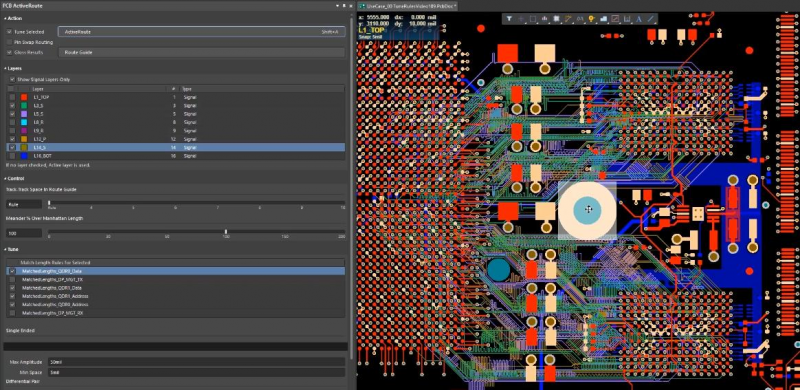
The Active Route® tool for embedded systems design in Altium Designer
Set Your Embedded Systems Apart with Altium Designer
Embedded systems for avionics, aerospace, and military applications can be complicated, and keeping track of all the standards and components that will appear in a single system might seem daunting. Altium Designer includes important tools that help you stay organized, create the best compliant layouts, and customize all aspects of your design. The management tools are built to ensure a smooth transition to production and eventual deployment.
Best of all, these design tools are built into a unified environment. Other design platforms may include similar functionality, but they still segment important design and management features into separate interfaces. This creates plenty of opportunities for data errors and lost productivity. Instead, you can manage all aspects of your design from a single interface when you work in an integrated environment.
Design Cutting Edge Embedded Technology in an Integrated Platform
Staying at the forefront of embedded systems design takes access to the best design technology. Your schematic, routing, production, and component management tools should be second to none and built into a single design environment. You’ll be able to include any functionality you can imagine when you work in the right design environment.
- The rules-driven design engine in Altium Designer helps ensure that your designs will meet critical reliability and manufacturability standards on embedded systems for avionics, aerospace, and military applications. Learn more about rules-driven design in Altium Designer.
- Hierarchical and multichannel design features are the best way to keep the functionality in your embedded system clean and organized. Your features import directly into your layout tools, and all within a single program. Learn more about hierarchical and multichannel design in Altium Designer.
- The management and documentation tools in Altium Designer help you manage versions and variants directly within your design software. Learn more about the variant management features in Altium Designer.
Designing mission-critical embedded systems is a tall order that requires the best design, management, collaboration, sourcing, and production planning tools. Only Altium Designer places every single one of these features within a single interface. The rules-driven design environment allows you to define the electrical and physical feature requirements, and your design features will check your layout against these rules in real-time.
Altium Designer combines the best-embedded systems technology in a single platform, and Altium wants you to be successful. The AltiumLive forum, webinars, podcasts with industry experts, design tutorials, and an extensive knowledge base are at your fingertips. No other PCB design software company gives you this many resources for success.
It’s time to ditch outdated design software that splits your attention between multiple programs with inconsistent workflow. If you want access to the best-embedded system design tools within a single platform, you need Altium Designer.

